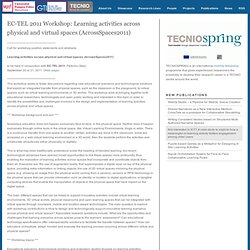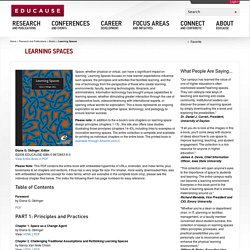

EC-TEL 2011 Workshop: Learning activities across physical and virtual spaces (AcrossSpaces2011) *************************************** Call for workshop position statements and abstracts Learning activities across physical and virtual spaces (AcrossSpaces2011) to be held in conjunction with EC-TEL 2011, Palermo (Italy) September 20 or 21, 2011 (Web page) *************************************** This workshop seeks to foster discussions regarding new educational scenarios and technological solutions that exploit an integrated transfer from physical spaces, such as the classroom or the playground, to virtual spaces, such as virtual learning environments or 3D worlds.

Physical and Virtual Learning Spaces in Higher Education: Concepts for the Modern Learning Environment (9781609601140): Mike Keppell, Kay Souter, Matthew Riddle. Learning Spaces. Space, whether physical or virtual, can have a significant impact on learning.

Learning Spaces focuses on how learner expectations influence such spaces, the principles and activities that facilitate learning, and the role of technology from the perspective of those who create learning environments: faculty, learning technologists, librarians, and administrators. Information technology has brought unique capabilities to learning spaces, whether stimulating greater interaction through the use of collaborative tools, videoconferencing with international experts, or opening virtual worlds for exploration. This e-book represents an ongoing exploration as we bring together space, technology, and pedagogy to ensure learner success. Please note: In addition to the e-book's core chapters on learning space design principles (chapters 1-13) , this site also offers case studies illustrating those principles (chapters 14-43), including links to examples of innovative learning spaces.